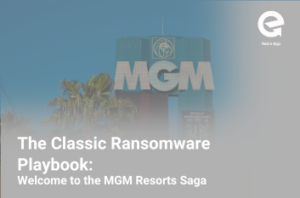 The growth of mobile communications has hit almost every facet of our lives, including professionally. We dash off emails, communicate with employees and even conduct meetings with our smartphone.
The growth of mobile communications has hit almost every facet of our lives, including professionally. We dash off emails, communicate with employees and even conduct meetings with our smartphone.
Healthcare professionals need to rely on mobile communications as well, perhaps more than most professionals. After all, doctors and nurses don’t sit at their desks all day – they move from place to place working with patients and collaborating with colleagues.
It would seem obvious that, especially in life-or-death situations, medical care has greatly improved due to the speed of mobile communications. But concerns over privacy and compliance have regulated how this operates. The Health Insurance Portability and Accountability Act (HIPAA) has strict guidelines on how mobile communications can be used to transport health records.
Title II of HIPAA regulates procedures for medical professionals with access to confidential electronic medical records. While these policies worked for a while, the problem was that when these regulations were implemented in the late 1990s and early 2000s, mobile communications, particularly text messaging, had not yet taken off.
By the mid-2000s, people were beginning to text in waves, and it eventually made sense for healthcare professionals to communicate with one another and with patients through SMS messaging. However, the problem with healthcare professionals is that SMS text messaging cannot ensure a patient’s privacy. The messages are on an unsecured telecommunications platform, meaning messages can be intercepted and read by anyone.
Because of these problems, regulators have prohibited using SMS to transport any Electronic Protected Health Information (ePHI), which is any health information that is produced, saved, transmitted or received in electronic form. So for instance, the quick message “John’s vitals in trouble, tend to immediately” could not go through SMS channels.
The penalties for non-compliance are steep. A single violation of the provisions can equate to a $50,000 fine. This is one reason why doctors still carry around pagers.
These regulations, while necessary, create headaches for healthcare professionals. With the current regulations, those working in a hospital must make land line calls to messaging services to ensure no interceptions. But fortunately, the rise in mobile communications through apps has provided the opportunity for healthcare professionals to enter the current century.
Mobile applications, such as Red e App, provide medical professionals a safe and secure way to transport medical data between coworkers and patients. These types of HIPAA-compliant messaging services offer fully encrypted platforms, with rigorous authentication, that allow data to be stored without the fear of interception or other privacy violations.
In fact, HIPAA-compliant messaging services may actually work better than SMS. Mobile apps allow physicians to securely access imaging results, patient procedures and medical histories, allowing them to make more informed medical decisions. Since all this documentation remains in the platform, medical professionals can easily access relevant information, thus shortening their response times.
To see more of Red e App’s capabilities in the healthcare field, check out our Hosparus and QIP case studies.


